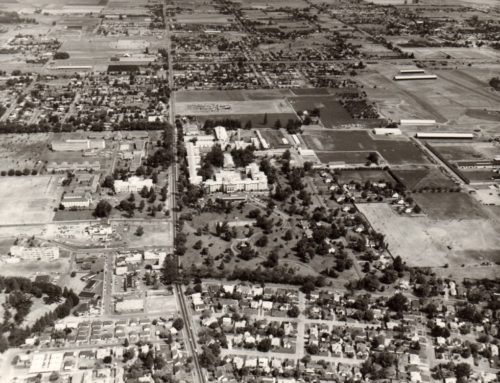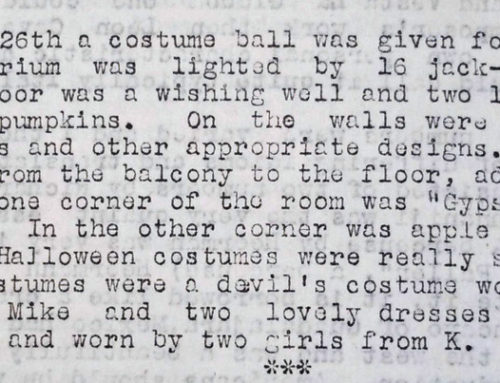The following is an article written by Amy Vandegrift, development director at the Willamette Heritage Center in Salem, Oregon for the Statesman Journal appearing Sunday, February 4, 2012. It describes the Colony Farm, a property in West Salem owned and maintained by the Oregon State Hospital.
For much of its history, the Oregon State Hospital had a farm and garden department that met almost all the needs of the institution’s patients and staff.
The operations used staff and patient labor in the running of its dairy, hog and poultry operations and the garden truck for crops and hay produce. As reported by Don Upjohn, journalist for Capital Journal, Dec. 18, 1934, “The farm and garden department produced hundreds of thousands of pounds of vegetables and fruits. … As nearly as possible, the institution is made self-sustaining. One feature is rich garden lands in the river bottoms of Polk County.”
In addition to the hospital grounds and nearby Cottage Farm, the hospital also operated a farm in West Salem known as Colony Farm. These 403 acres of bottom land along the Willamette River were located off of Oregon Highway 22 on State Farm Road. In addition to acres of apple, cherry, walnut and filbert orchards, vegetable gardens and berry fields, the farm had a two-story barracks for hospital patients and staff, a kitchen/mess hall that included a large wood-burning stove, barn for the draft horses, shed for farm equipment, pump house, windmill and a house for the full time foreman and his family.
From the beginning of planting through harvest season, 50 hospital patients and two staff were transported weekly from Salem out to the Colony Farm on Monday morning. There they worked at the farm, lived in the barracks and returned to the hospital on Friday afternoon. During harvest, prisoners from the Penitentiary along with their guards were brought in to assist with the harvest. Up until 1943, draft horses were used for farming; after that time, tractors were added.
Flo Burgermeister Bredahl has happy memories of living at Colony Farm in the 1940s when her father was the foreman and her mother was the farm’s institutional cook. She and her brother played all over the farm. The hundreds of ducks living in the area laid eggs in their flowers. She was allowed to ride the horses under the careful eye of a hospital patient assigned to watch her so that her mother was free to do her job. During the fall, when the prison crew assisted with the harvest, the patient kept her far away from them.
The low areas on the farm flooded every year. In 1943, however, she remembers the morning her father carried her and her brother from their bedrooms to the breakfast table because there was 6 inches of water in the house.
They thought it was funny that both their mother and father were wading around in rubber boots. Her mother fixed breakfast for the family on the wood stove before they were taken by row boat to the road and on to their grandparents for four days. She remembers afterward the house had 3 inches of mud on the floor to be cleaned out.
The 1961 Board of Control Report foreshadowed the farm’s closure: “Significant changes have occurred in the institutional farm program. The result is a decreased emphasis of these programs at the mental hospitals and an increased emphasis at the penal institutions. … A new concept of treatment in our mental hospitals has prompted some radical changes in the institutional farm program. The trend toward more intensive treatment with modern drugs, thereby releasing patients earlier, has decreased the supply of capable patients available for farm work at the mental hospitals….”
The Colony Farm property was transferred to the Oregon State Correctional Institution on Jan. 1, 1964.
Amy Vandegrift is the director of development at the Willamette Heritage Center at the Mill.



